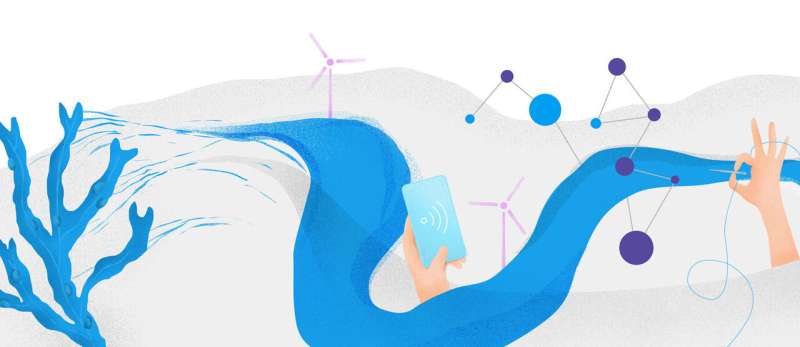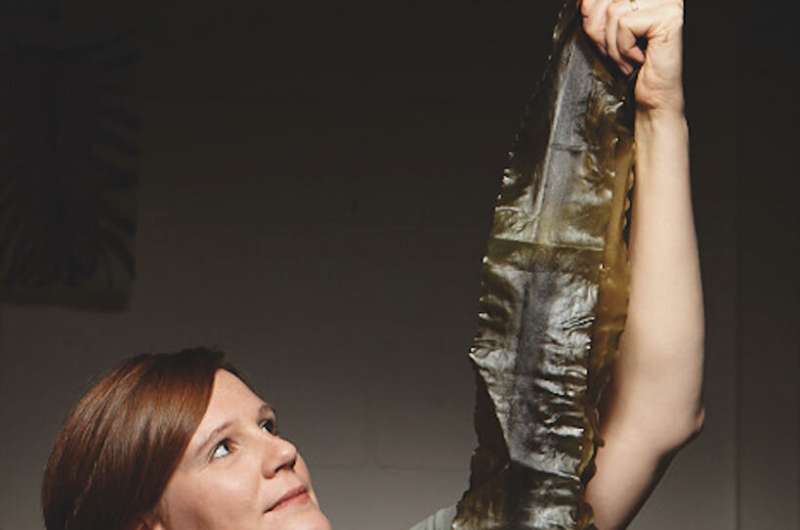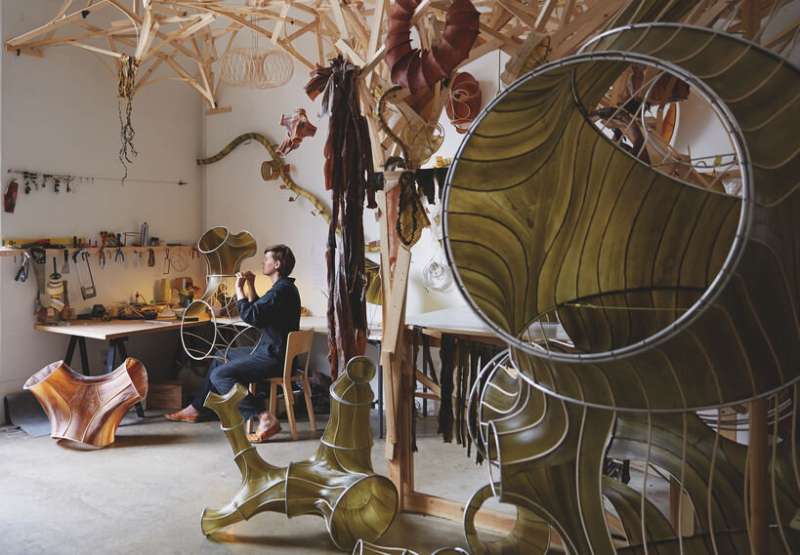Credit: Marika Latsone
Finns consume over four times more energy and raw materials than is sustainable. We seem to finally understand that our house is on fire, but do we know how to put it out? Can design and the arts help us to reach climate targets?
Minna Halme, Professor of Sustainability Management, Julia Lohmann, Professor of Practice in Contemporary Design and Peppi Seppälä, student of Advanced Energy Solutions sat down and discussed these questions.
During Aalto University's strategy process, Julia Lohmann called for a big change:
"We urgently have to rethink everything: How we grow our food, what materials we produce and consume, how we set up exhibitions and how we travel and collaborate—if we want to achieve a future worth living in. Let's use our design skills to this end."
But what about people from the other disciplines at Aalto, can they relate to this statement?
"Julia's statement really resonated with me," says Minna Halme, Director of the Aalto Sustainability Hub. "In terms of my own work, I would say: let's use our business skills to this end." For over 20 years, Halme has studied sustainability and management.
Peppi Seppälä also agrees. "We know the needs well enough already to start implementing changes with the technologies we have now."
"When I started my studies, many teachers told us we are the generation that will make a difference. However, the next ten years are crucial, and we are still not the decision-makers yet."
Limited by our current systems
Credit: Aalto University
"As a student in technology, I feel we have to be more critical about whether something is really necessary," says Seppälä. "For example, should we really use our resources to develop materials which are difficult to recycle and extremely energy-intensive to produce?"
Minna Halme believes that the existing scientific merit system encourages business scholars to develop models for the current paradigm based on economic growth, a fact that bothers Julia Lohmann: "I am surprised that the mainstream is still dealing with 'business as usual' in a time of such crisis. The media is full of dystopias and scientists are practically screaming with urgency. It's obvious we need a systemic change, so critique is only the first step. To really change we'll have to collaborate across disciplines. We'll have to design alternative futures that we are drawn to, rather than the ones we are afraid of."
A designer by training, Lohmann has focused on seaweed as a material for building, exploring its potential to replace less sustainable materials. Algae can remove excess nutrients and clean the sea while being grown.
During her residency at the Victoria & Albert Museum in London, Lohmann established The Department of Seaweed, a community of practice which openly shares new knowledge. "Seaweed is as important as other materials of making, such as ceramics, textiles and silver."
"The main difference is that most of what we will have made from seaweed has not been done yet; it is a material of the future."
New materials are part of the solution, but the key challenge is how to produce and consume less. In Halme's experience, people view degrowth as a scary, backward development, even though our consumption currently exceeds four times the amount that ecologists say is sustainable. "People have been taught to think that only continuous economic growth ensures a good life, and they don't even want to discuss alternatives. The arguments are always the same: are you suggesting we should go back to the fields and get rid of our amenities?" Halme sighs.
Lohmann describes how designers from Carnegie Mellon's Transition Design lab co-created a roadmap to mitigate water scarcity in California with communities in which groups such as farmers and residents were at conflict. "The solution was to find a shared vision. When viewed from a time frame of 30 years, everyone dreamed about the same thing: sitting in a garden with friends. When the dream is shared, things are easier to agree upon."
Dystopias make us understand the need for change, but they do not show a path toward possible futures. "We lack appealing transitions towards a sustainable future," continues Lohmann.
What would make us feel safe then?
Julia Lohmann. Credit: Peter Krejci.
"Maybe the idea is not to look into the future, but to look back in a different way," Lohmann suggests. "I heard that Switzerland in the 1970s was sustainable, and that does not sound scary at all."
Halme backs this up with research: "Our happiness in Western countries hasn't really increased during the past 40 years."
"Once basic needs are met and people trust they live in a just society, economic growth does not make us any happier."'
Lohmann and Halme agree that it really matters how our system measures things. "We should not just narrow-mindedly maximise profits and growth, but instead maximize something different, like human and ecological wellbeing," says Halme. "Our target is to keep the earth livable, and resources should be used accordingly. Even then, business skills will be necessary."
The first steps on a road to change
There is no magic bullet for a systemic change, as we need to make changes at all levels. We still have time for creative solutions. But can we find changes that might have a substantial impact?
Minna Halme says that constructive models of degrowth are outside the discourse of standard economics and hence won't be printed in Financial Times Top 50 journals.
Julia Lohmann gets excited. "That is a design brief! How can we create wellbeing in a situation of zero growth?"
Minna Halme reflects on the level of impact it could make if the tools of evaluation, in this case, the FT50 research journal list, was adapted to focus on sustainability journals. "That would create huge leverage for change in business studies and economics," she says.
Julia Lohmann's Department of Seaweed. Credit: Peter Krejci
In the realm of corporate investment, Halme views large investment funds as a leverage point. If these giants would invest in long-term development it would have an enormous impact and be economically sound as well.
The Finnish fuel company Neste made a strategic shift to focus on making fuels from waste. The transformation took 10 years but has resulted in an increase of over 500% on the share price in five years. "This only happened because the Finnish government as an investor had patient capital," she said.
"Our existing energy infrastructures stifle carbon-saving technologies despite their environmental advantages," continues Seppälä. "We also now consider natural gas to be a sustainable alternative for coal, but we should be doing everything we can to find and implement carbon-free solutions. Scientists have calculated the global carbon budget—in a sense, there is a clock that measures how much carbon we have left."
How can art and design contribute?
On an individual level, Seppälä believes people need to understand the scale and impact of different activities. "If you drive a long way by car to take your plastics to recycling, you produce more emissions than recycling will save. Check out the Sitra-funded 1.5 Degree Lifestyles study to see which individual activities really make an impact."
Lohmann believes art and design can build bridges between everyday life and knowledge silos and can give visibility to those ideas that may yet be too radical or distant for science. "If you read a report, it might not matter to you until you make the connection to your own life. Designers and artists engage people through the types of narratives that matter to us and change our behavior."
"This is what design is all about as a discipline, connecting things from everywhere to human life. After all, everyday life is where changes happen."
This spring, Lohmann taught a course with KTH Stockholm at the Centre for Marine Infrastructure in Kristineberg, Sweden. "The marine scientists said that we already have so much knowledge about the effects of climate change. Rather than researching the warming any further, now we need to inspire people to change their behavior. I think this is how we designers can help. We can engage people and show why ocean health matters."
Provided by Aalto University


























